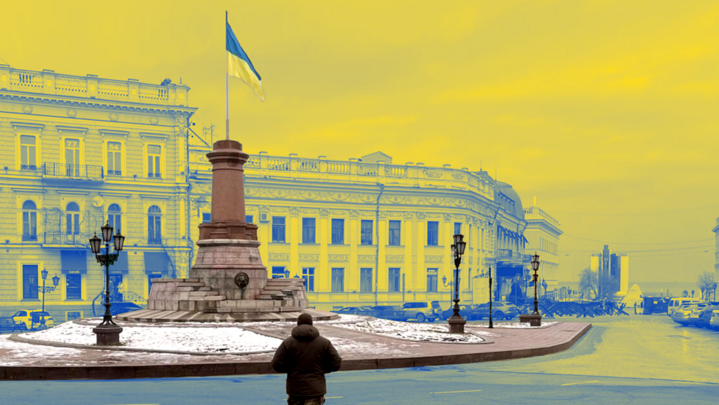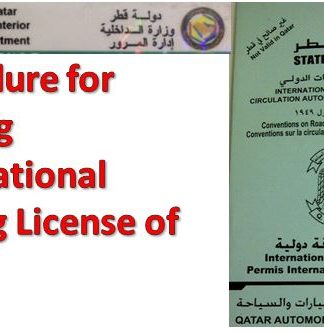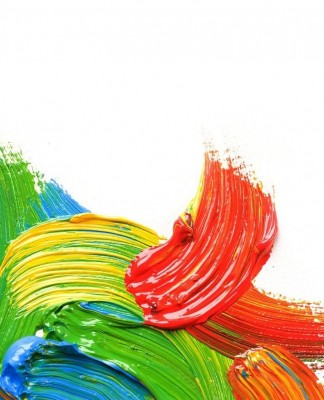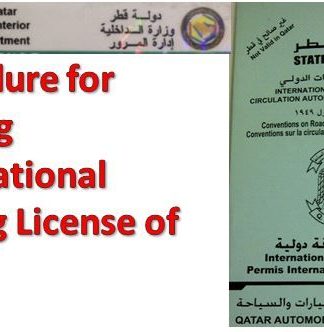War in Ukraine: ‘De-Russification’ on the rise in Odesa
Issued on: 22/02/2023 – 06:55
The statue of Catherine II of Russia in Odesa, Ukraine, pictured here on February 1, 2023, was removed in December and replaced with a Ukrainian flag.
The statue of Catherine II of Russia in Odesa, Ukraine, pictured here on February 1, 2023, was removed in December and replaced with a Ukrainian flag. © David Gormezano, Studio graphique FMM
Text by:
David GORMEZANO
7 min
From our special correspondent in Odesa – Russia’s offensive in Ukraine has accelerated a campaign of “de-Russification” in the major port city of Odesa. It’s a delicate process in a city that has long been influenced by Russian language and culture. From changing street names to dismantling statues and removing Russian literature from library shelves, the war has removed previous resistance to the idea.
On December 28, 2022, in the middle of the night, municipal employees quietly dismantled a monument of Catherine the Great, Empress of all Russia.
For Artak Hryhoryan, a young IT engineer from Odesa speaking in early February, it was high time for city authorities to remove a statue which “for years had been a regular rallying point for pro-Russians with Russian flags and slogans repeating Moscow’s propaganda” from the public space.
The statue of the empress who snatched southern Ukraine from the domination of the Ottoman Empire at the end of the 18th century has long been a source of discord in Odesa. Originally erected in 1900, the bronze statue aimed to make the empress a “mother” and founder of the city. In 1920, the Bolsheviks dismantled it for the first time and replaced it with a statue of Karl Marx and later with another honouring the mutineers of the Russian battleship Potemkin.
The monument dedicated to the founders of the city of Odesa in 2010.
The monument dedicated to the founders of the city of Odesa in 2010. © Wikimedia commons
The city council restored the statue in 2007, reinstalling it on its marble throne overlooking the famous Potemkin steps leading to the city’s port. A little over 15 years later, with Odesa living under threat of Russian missile fire, this symbol of Russian empire became unbearable to Artak. The 26-year-old became convinced that the statue should return to the museum.
Catherine II and the symbols of the Russian world
“Last September, I came here and threw red paint on the statue. A few days earlier, a young girl had vandalised the statue, too. She wrote ‘Catherine = Putin’. The police became involved and wanted to fine her. With the war, the police should not do that. The girl made a gesture for Ukraine. If the police were against her, they must be pro-Russian. I wanted to support her by vandalising the statue myself. If all the citizens of Odesa start protesting against the presence of this statue, the police will not be able to do anything. It is not a question of destroying the statue but rather of saying that it cannot stay here indefinitely. It’s just not possible [in the middle of this war] to keep Russian symbols in Odesa.”
Artak and his friends eventually achieved their aim. On November 30, the city council unanimously voted to remove the statue again.
Artak Hryhoryan, a young IT engineer from Odesa who campaigned for the statue of Catherine II to be removed from public space. Odesa, February 4, 2023.
Artak Hryhoryan, a young IT engineer from Odesa who campaigned for the statue of Catherine II to be removed from public space. Odesa, February 4, 2023. © David Gormezano, FRANCE 24
“Catherine II oppressed many groups of people: the Poles, the Ukrainians and the Armenians”, explains Artak. “She is one of history’s most harmful characters. She committed the same horrors as Putin but 200 or 300 years ago. Given what is happening now, can we imagine seeing statues of Putin in 200 years? It’s impossible… We do not want any more monuments to the glory of dictators in our cities and streets; we want to be a democracy with statues dedicated to the glory of our heroes, not to that of Putin, Catherine or Stalin.”
No cancel culture in Odesa
The statue of Catherine the Great has been resting in a wooden box in front of the Odesa National Fine Arts Museum for a little over a month. The director of the museum pays it little attention. Since the Russian invasion of Ukraine on February 24, 2022, the necessity of dismantling the Empress’s statue became obvious to both previously pro- and anti-Russian Odesans, because the conflict managed to unite almost all Ukrainians against the new imperial war led by Moscow.
“We aren’t erasing anything, we are just putting the statue in a museum,” said Kyrilo Lipatov. “This monument was left here in the Fine Arts Museum. Now the Ukrainian Institute will decide what to do with it. For the moment, five artists are to be selected to propose projects that will allow for the public to consider this monument from a postcolonial perspective, and thus create something new”, he explained.
Kyrilo Lipatov, Director of the Odesa Fine Arts Museum, February 4, 2023.
Kyrilo Lipatov, Director of the Odesa Fine Arts Museum, February 4, 2023. © David Gormezano, FRANCE 24
Museums have been in turmoil almost everywhere in Ukraine since the outbreak of the Russian offensive. Kyrilo Lipatov and his team sent part of the museum’s collections away for safekeeping, including works by Russian artists. “In other museums in southern Ukraine and Crimea, the works could not be evacuated, and the Russians seized them,” said Lipatov.
In 2021, Lipatov had already began to pull Soviet art from the museum’s space in order to redirect its focus towards contemporary pieces signed by Ukrainian artists. It was a first step in “de-communising” and “Ukrainising” the collection before adding new works inspired by Ukrainian resistance to the Russian invasion the following year.
A guided tour of the Odesa National Fine Arts Museum, February 4, 2023.
A guided tour of the Odesa National Fine Arts Museum, February 4, 2023. © David Gormezano, FRANCE 24
When asked if the Fine Arts Museum was in the process of “de-Russifying” itself, denounced by some as a “cancel culture” operation, the director said, “It is Russia which practices ‘cancel culture’ [by denying the existence of the Ukrainian nation]. The Fine Arts Museum in Odesa is fighting to preserve works of art during this war, even works by Russian artists linked to Russian imperialism or official Soviet art, which have nothing neutral about them.”
Farewell to Russian culture or to Russian imperialism?
Daily newsletter
Receive essential international news every morning
Subscribe
In the libraries of Odesa, the war has also led to an accelerated “de-Russification” of the bookshelves. “No one is going to ban reading Tolstoy, Lermontov, Pushkin or Dostoyevsky. It is Russia that discourages Ukrainians from reading these authors because they represent the culture of the aggressor,” said Iryna Biriukova, director of the Odesa National Scientific Library. “We studied these authors a lot in school. Today we want to discover other authors. People must know the riches of world literature. It is a question of balance. We are not prohibiting anything; we simply want to change people’s mentalities.”
Iryna Biriukova, Director of the Odesa National Scientific Library on February 3, 2023.
Iryna Biriukova, Director of the Odesa National Scientific Library on February 3, 2023. © David Gormezano, FRANCE 24
Like many historic buildings in Odesa, the library, built by wealthy patrons in the early 20th century, barricaded itself at the start of the Russian offensive a year ago. The reading rooms are now deserted and visitors come to borrow books and also to recharge their smartphones. For Biriukova, the electricity shortage affecting Odesa for the past two months favours the reading of books in paper format. Suggesting visitors read works by Ukrainian authors and from authors from around world is an obvious step for her.
“De-communisation started in the 90s when certain streets were renamed. We are a city with a multicultural past but covered with ideological markers linked to Russia. The French, the Germans, the Jews, the Greeks, the Italians, the Moldavians and dozens of other nationalities built Odesa; this memory is under-represented. Russian imperial culture is largely over-represented. We have to find a balance; this is what has to change.”
Since 2014, the war between Ukraine and Russia has intensified. In parallel with the military confrontation, the conflict has extended to the cultural sphere. Residents of Odesa who are not fighting on the battlefields in Donbas or elsewhere now contend with questions of political and cultural figures and literature. For Artak, removing Catherine the Great’s statue is a victory because “Putin refers to it in speeches”. He and others now want to take on the statues of Soviet generals which exist all over the city.
For the director of the Fine Arts Museum, it is urgent for “the monuments which have been created for propaganda purposes to be removed from the public space and brought into the museums, which will give them another life”. His colleague from the Odesa National Scientific Library has the same project, so that the vestiges of totalitarianism and imperialism have no other place than in the archives. “We cannot promote the culture of a nation that murders, loots and rapes our country. Look at the influence of certain books in Russia – is that what we want for our children?”
Ukraine, one year on
Ukraine, one year on © Studio graphique France Médias Monde
UKRAINE
RUSSIA
UKRAINE WAR ANALYSIS
CULTURE
ART
HISTORY
ODESA
FEATURES
RELATED CONTENT






























